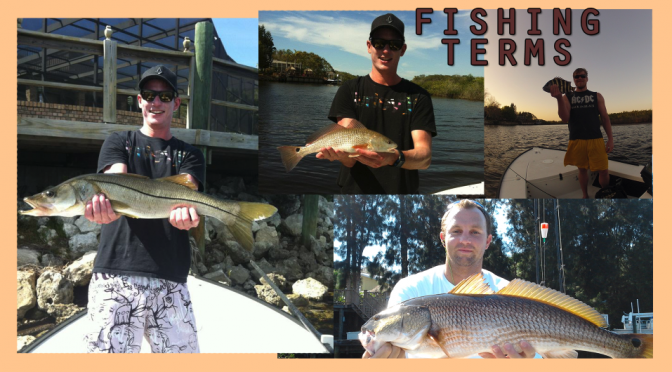Fishing has a unique set of vernacular like any other sport. While in the pursuit of the best fish we’ve found that certain things stand out. In describing those things there’s either already a descriptive term for it, fisherman have made their own term for something with a generic name, or something’s been given a unique name. This is a list of those common inshore fishing concepts to know about.
Water Clarity: This simple term represents a variety of important water characteristics including oxygen content, water temperature, visibility, etc.
Structure: something immovable that attracts fish.
Trough: A narrow underwater canal usually formed by land or a narrow area between two things.
Ledge: A steep drop from shallow depths to deeper depths.
Points: Places where the land creates a tip out in the water.
Passes: Areas between land that water travels through.
Pockets: small coves or bays that can be sanctuaries for fish.
Salt and Pepper: This is a type of natural grass flat shaped by high fish activity. It looks like a salt and pepper shaker, patches of sand and patches of grass.
Hole: This can be a deep hole in an area with shallower depths, or a deeper sandy spot on a shallow patch of grass flat.
Reef: This encompasses underwater areas ranging from hard bottom places with natural reef growth to artificially designed reef structures.
Tides: many fish become most active during strong moon phases during larger tidal swings.
Grass: there are a variety of different types of grass that have different shapes and functions. Although not technically considered grass, they look like grass.
Depth: there are a wide variety of depths that fish can be found.
Light: full moons create a lot of moonlight, new moons have almost no moonlight, docklights can create artificial light, sunlight at your back can be useful for spotting fish.
Swash: A place where currents wrap around something to create a circular shaped strong current.
Shadow line: the place where significantly brighter light meets significantly darker light, i.e., the edge of a shadow.
Activity: obvious splashes or swirls on the surface of the water from large fish moving quickly underwater after their prey.





